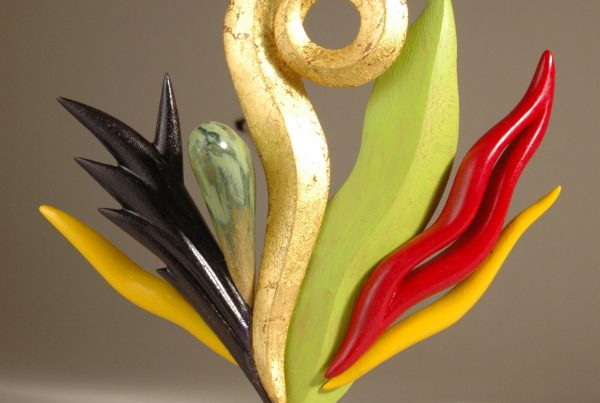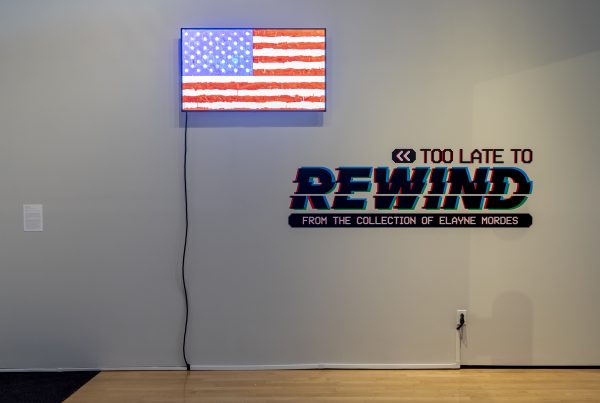 This, folks, is the way to do “All Florida.”
This, folks, is the way to do “All Florida.”
The 65th edition of this statewide assemblage of art by Floridians, on display at the Boca Raton Museum of Art through Sept. 25, has been renewed and rejuvenated. For the first time, instead of one juror selecting the entire corpus of work based on his or her taste, five established artists invited five of their favorite emerging artists to showcase new work. Turning a juried exhibition into an invitational seemed to make all the difference in transforming what occasionally felt like a lackluster, biased and dog-eat-dog summer survey into an exciting, diverse and communal celebration of the vanguard of Florida art.
The egalitarian spirit and curatorial delicacy of this venture is such that none of the artists steal the spotlight away from each other—not even the oxygen-consuming ones, like Eddie Negron and Marla Rosen’s cryptic, gallery-sized installation “High Water Mark II.” Everything is equally weighted and, with few exceptions, equally untethered from wall text that might have explained the artists’ thought processes and motivations. You’re expected to arrive at your own conclusions about the complex and/or smartly comic and/or casually disturbing and/or ecologically potent works on display.
 But for those seeking thematic linkage between the invitees, they can find it in the number of mixed-media artworks in the show. These young artists—at least I assume they’re young—seem to find solace in the hyphens and forward slashes between mediums, not content to adhere to single styles or textures. As a result, three-dimensionality is the new 2D, flatness a thing of the ancient postmodernists. This tendency is evident in pieces as eclectic as Jay Flynn’s “Moire #2,” a blurry image of a wilting potted plant that is self-reflexively backlit in front of a screen; Nina Surel’s “Sisterhood” (pictured above), a photographic mural of women lounging decadently on a gaudy backdrop, festooned with physical beads and fragile porcelain flowers; and Emilio Martinez’s outsider paintings, which integrate scraps of yellowing text into the artist’s vertical, dripping exorcisms.
But for those seeking thematic linkage between the invitees, they can find it in the number of mixed-media artworks in the show. These young artists—at least I assume they’re young—seem to find solace in the hyphens and forward slashes between mediums, not content to adhere to single styles or textures. As a result, three-dimensionality is the new 2D, flatness a thing of the ancient postmodernists. This tendency is evident in pieces as eclectic as Jay Flynn’s “Moire #2,” a blurry image of a wilting potted plant that is self-reflexively backlit in front of a screen; Nina Surel’s “Sisterhood” (pictured above), a photographic mural of women lounging decadently on a gaudy backdrop, festooned with physical beads and fragile porcelain flowers; and Emilio Martinez’s outsider paintings, which integrate scraps of yellowing text into the artist’s vertical, dripping exorcisms.
 The best of the All Florida contributions are so personal, so singular as to evade comparisons to anything else on the modern-art landscape. Sean Miller’s staggering “CLIF: Mobile Wunderkammer” (pictured above) is a cabinet of entomological wonders placed on and around a rejiggered bicycle—a mélange of insect taxidermy that’s full of surprises both witty and scientific, from the inconspicuous video footage in the bike’s basket to the identification cards nestled in its spokes. The anarchic cartoons and animated gifs of Carmen Tiffany (pictured below) masterfully combine cultural re-appropriation with social commentary and a flair for surrealist storytelling. Bonnie Seeman’s porcelain sculptures of ewers, vases and teapots tease and subvert functionality, each one dotted with porcelain bugs and fantastic fluted finishes, like something out of “Alice in Wonderland.”
The best of the All Florida contributions are so personal, so singular as to evade comparisons to anything else on the modern-art landscape. Sean Miller’s staggering “CLIF: Mobile Wunderkammer” (pictured above) is a cabinet of entomological wonders placed on and around a rejiggered bicycle—a mélange of insect taxidermy that’s full of surprises both witty and scientific, from the inconspicuous video footage in the bike’s basket to the identification cards nestled in its spokes. The anarchic cartoons and animated gifs of Carmen Tiffany (pictured below) masterfully combine cultural re-appropriation with social commentary and a flair for surrealist storytelling. Bonnie Seeman’s porcelain sculptures of ewers, vases and teapots tease and subvert functionality, each one dotted with porcelain bugs and fantastic fluted finishes, like something out of “Alice in Wonderland.”
 Some pieces even use the physical space of the museum in their works, like Carola Bravo’s “Gateways,” a video of a home interior that is projected onto a tucked-away wall and that integrates the museum’s fire alarm and emergency exit into the action of the minimalist narrative. The video beautifully collapses distinctions between the filmed and the now.
Some pieces even use the physical space of the museum in their works, like Carola Bravo’s “Gateways,” a video of a home interior that is projected onto a tucked-away wall and that integrates the museum’s fire alarm and emergency exit into the action of the minimalist narrative. The video beautifully collapses distinctions between the filmed and the now.
 Not to be outshone, Elizabeth Condon’s acrylics, such as “Electric Lotusland,” play with scale and our capacity for apocalyptic dread, as giant waves of paint converge like storm clouds over tiny metropolises. Jill Lavetsky’s black-and-white graphites, meanwhile, conjure stark landscapes of light and shadow, where surprising shapes emerge from binary worlds of possibility.
Not to be outshone, Elizabeth Condon’s acrylics, such as “Electric Lotusland,” play with scale and our capacity for apocalyptic dread, as giant waves of paint converge like storm clouds over tiny metropolises. Jill Lavetsky’s black-and-white graphites, meanwhile, conjure stark landscapes of light and shadow, where surprising shapes emerge from binary worlds of possibility.
But my favorite pieces in the show are the ones that feel, at least to my sunbaked eyes, the most quintessentially Floridian, milking our state’s icons for political comment. Sergio Vega’s “I Love Florida, and Florida Loves Me” is a sculpture of Mickey Mouse’s ears—but with twin blades of a circular saw forming the iconic black spheres.
 Even better is Vega’s “Turning Into the Crocodilian Brain,” in which a pair of headphones is placed on a crocodile skull. A second pair invites our listening pleasure, and contains manipulated audio from “The Rush Limbaugh Show.” This ingenious audio-sculptural mash-up is a commentary on Carl Sagan’s concept of the reptilian brain—the sort of nativist, reductionist, nonthinking brain that tunes into Limbaugh’s drivel.
Even better is Vega’s “Turning Into the Crocodilian Brain,” in which a pair of headphones is placed on a crocodile skull. A second pair invites our listening pleasure, and contains manipulated audio from “The Rush Limbaugh Show.” This ingenious audio-sculptural mash-up is a commentary on Carl Sagan’s concept of the reptilian brain—the sort of nativist, reductionist, nonthinking brain that tunes into Limbaugh’s drivel.
This new All Florida format has done away with awards, and probably for good reason, but I’ll just say it: Quintessential in its Florida imagery and of-the-moment in its political implications, “The Crocodilian Brain” is my personal “Best in Show.”
“All Florida” is at the Boca Raton Museum of Art, 501 Plaza Real, through Sept. 25. Admission is $12 adults and $10 seniors. For information, call 561/392-2500 or visit bocamuseum.org.







